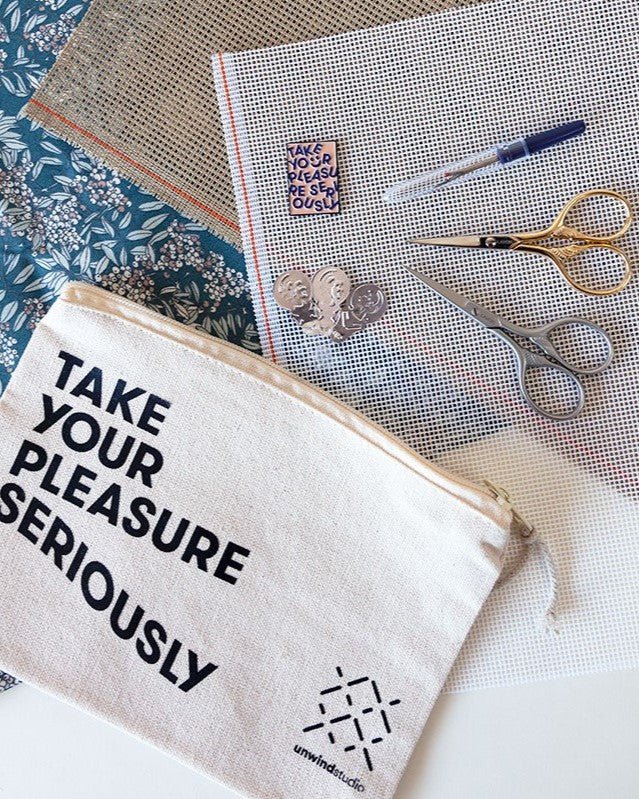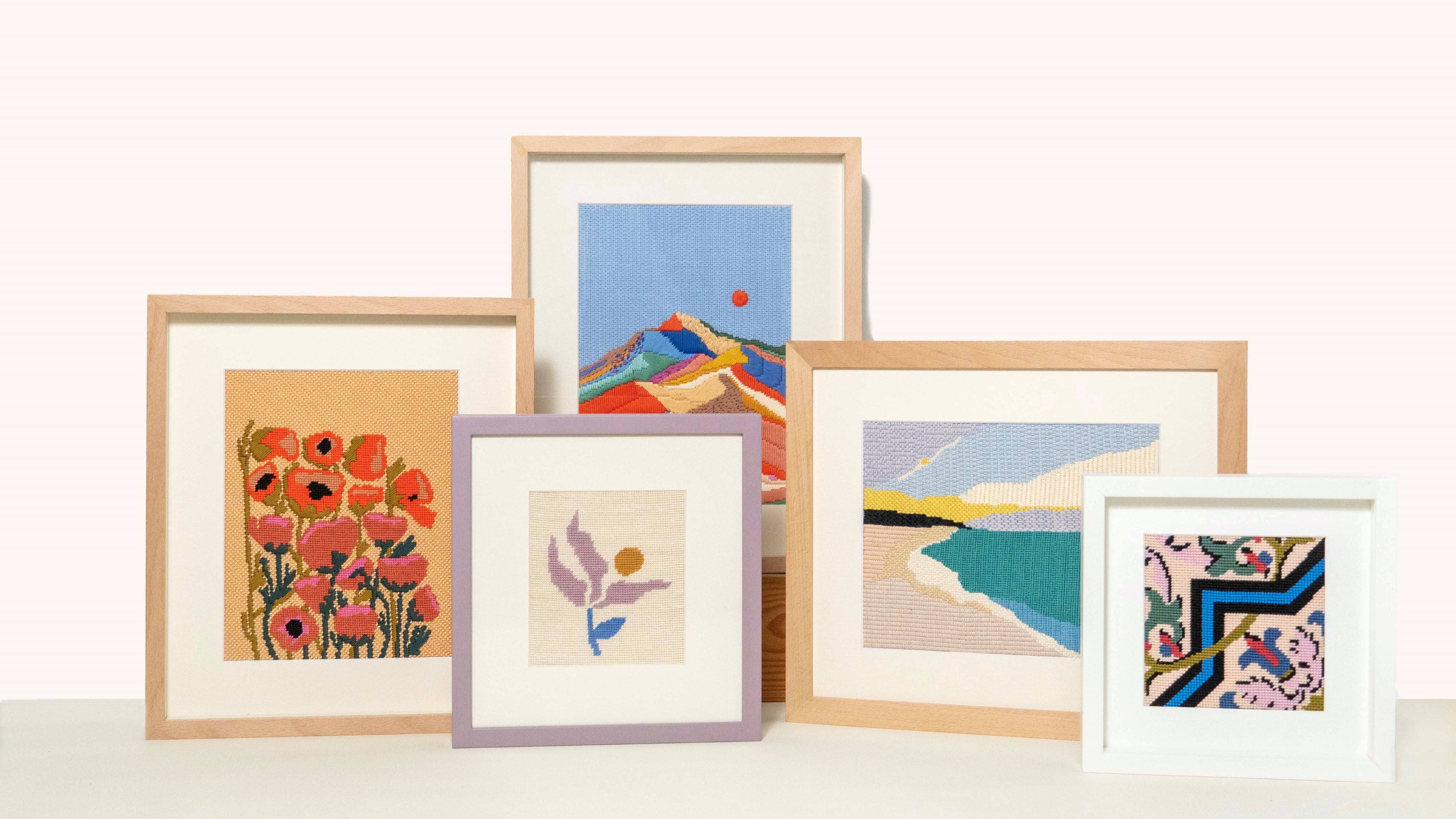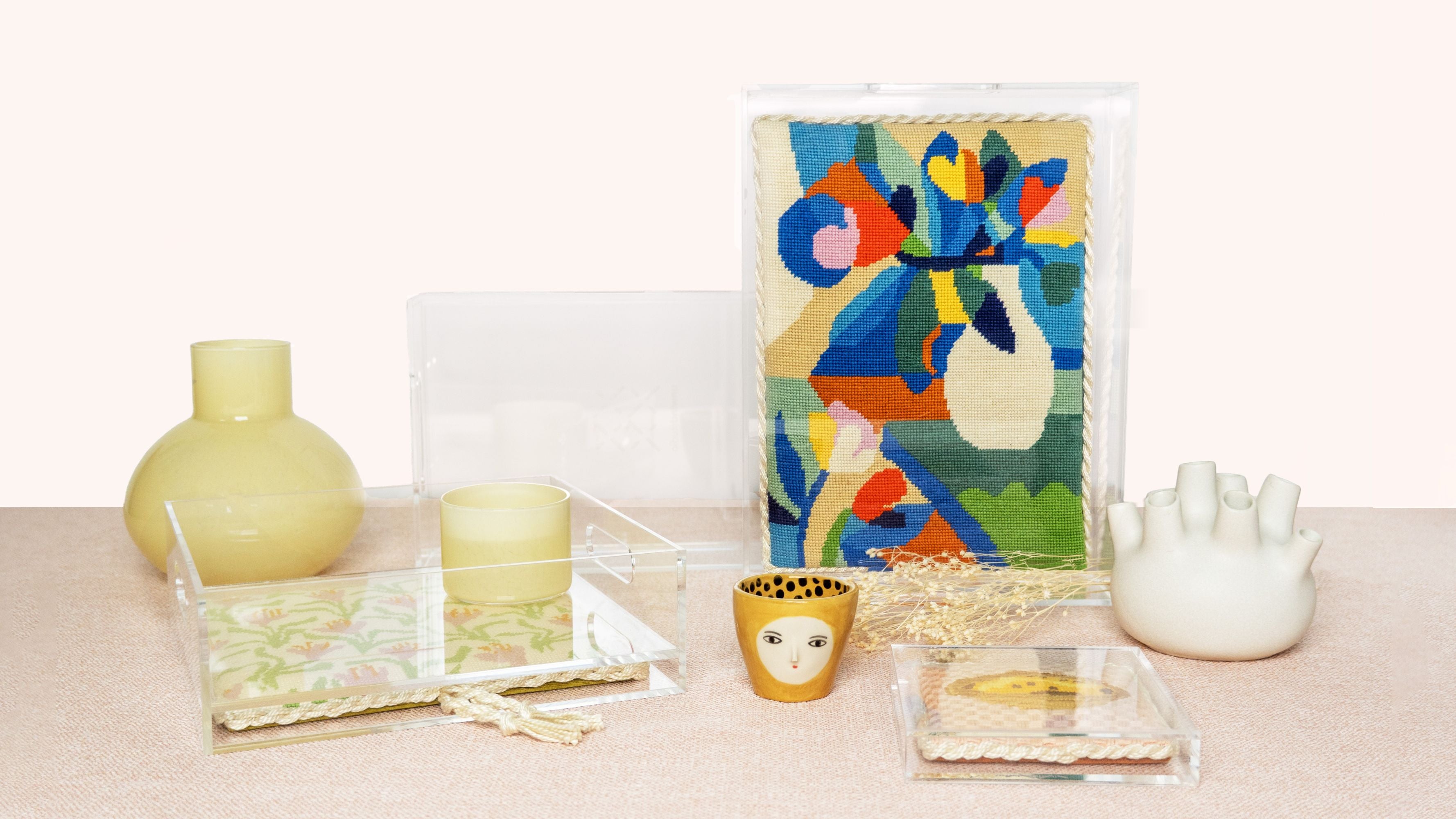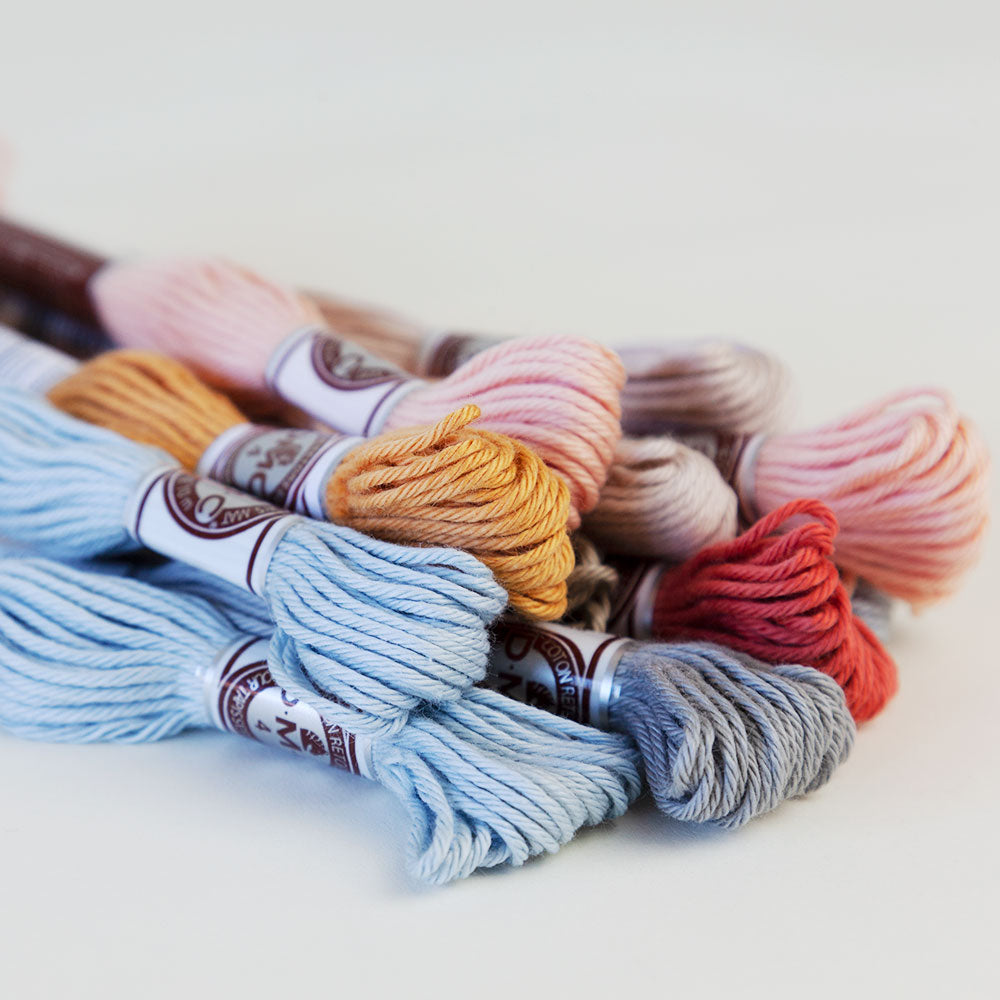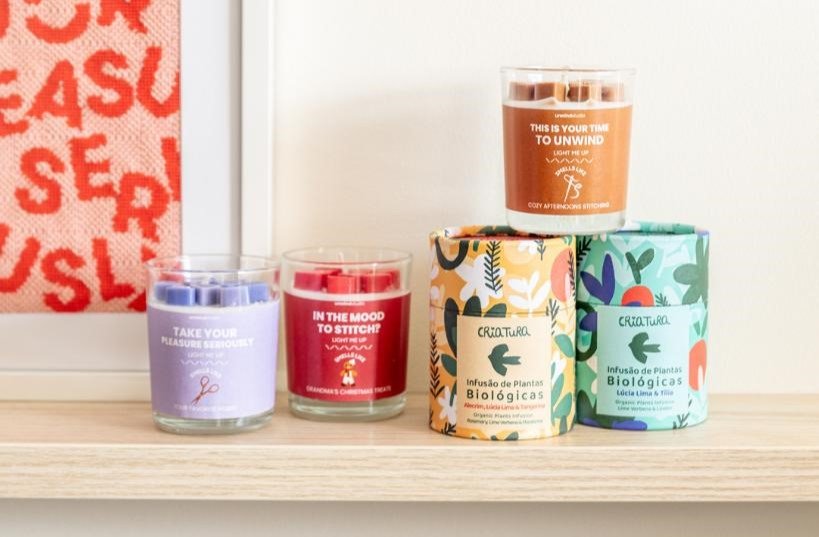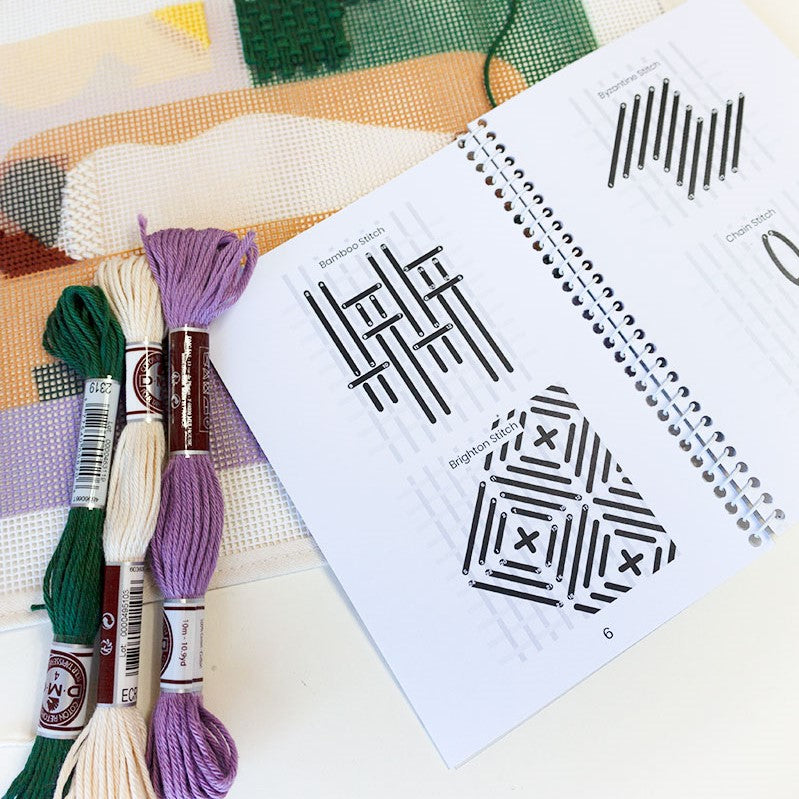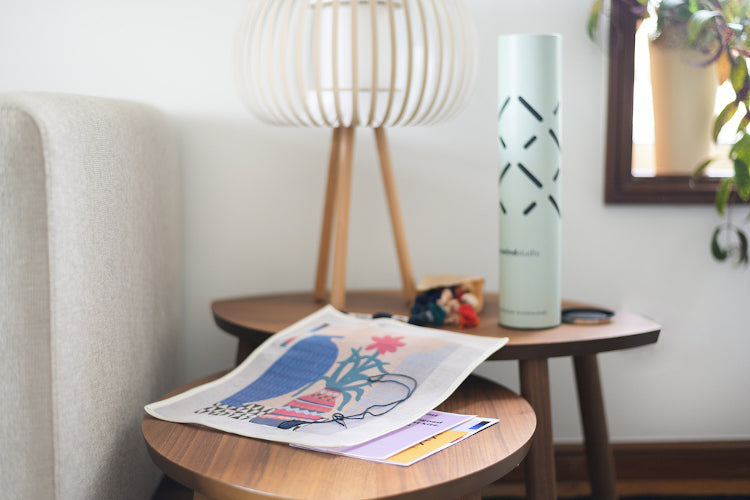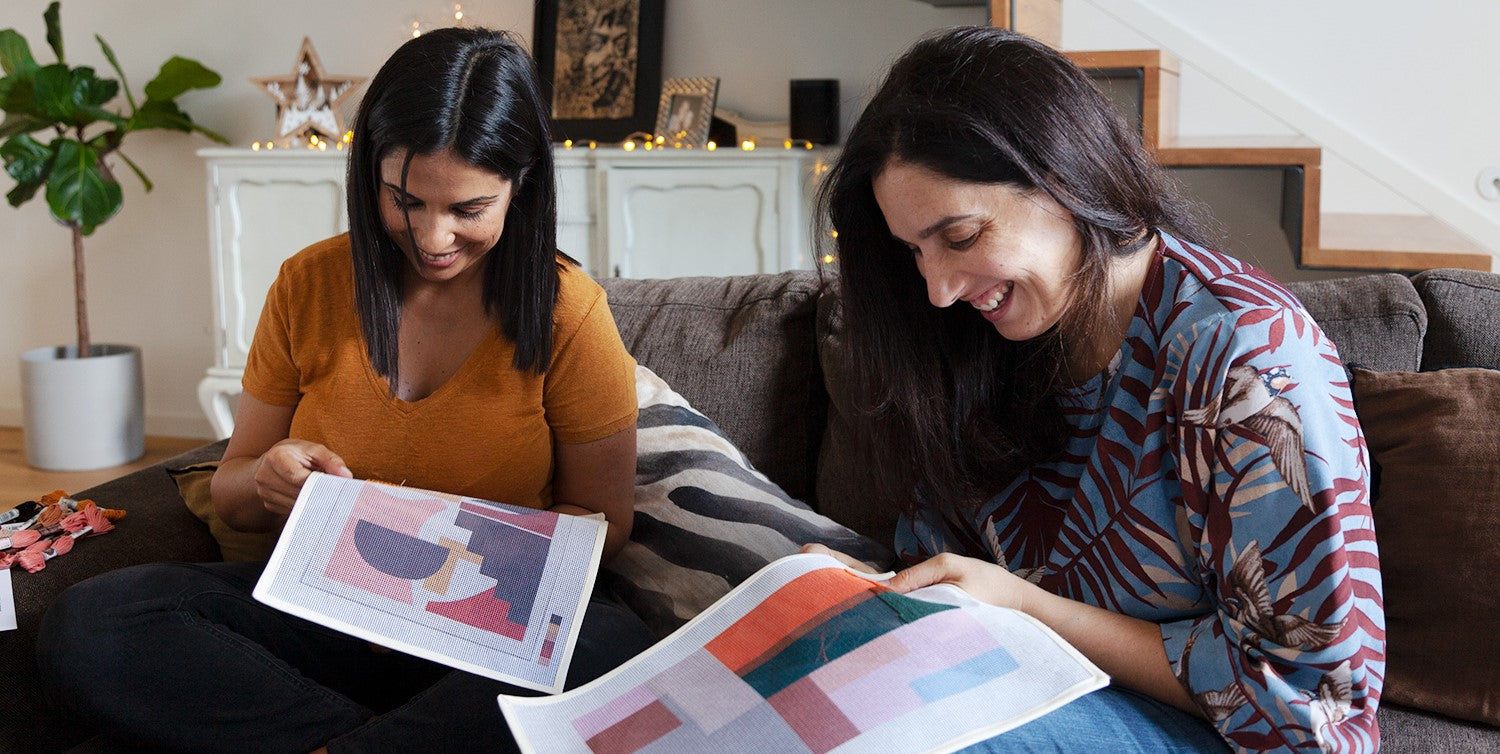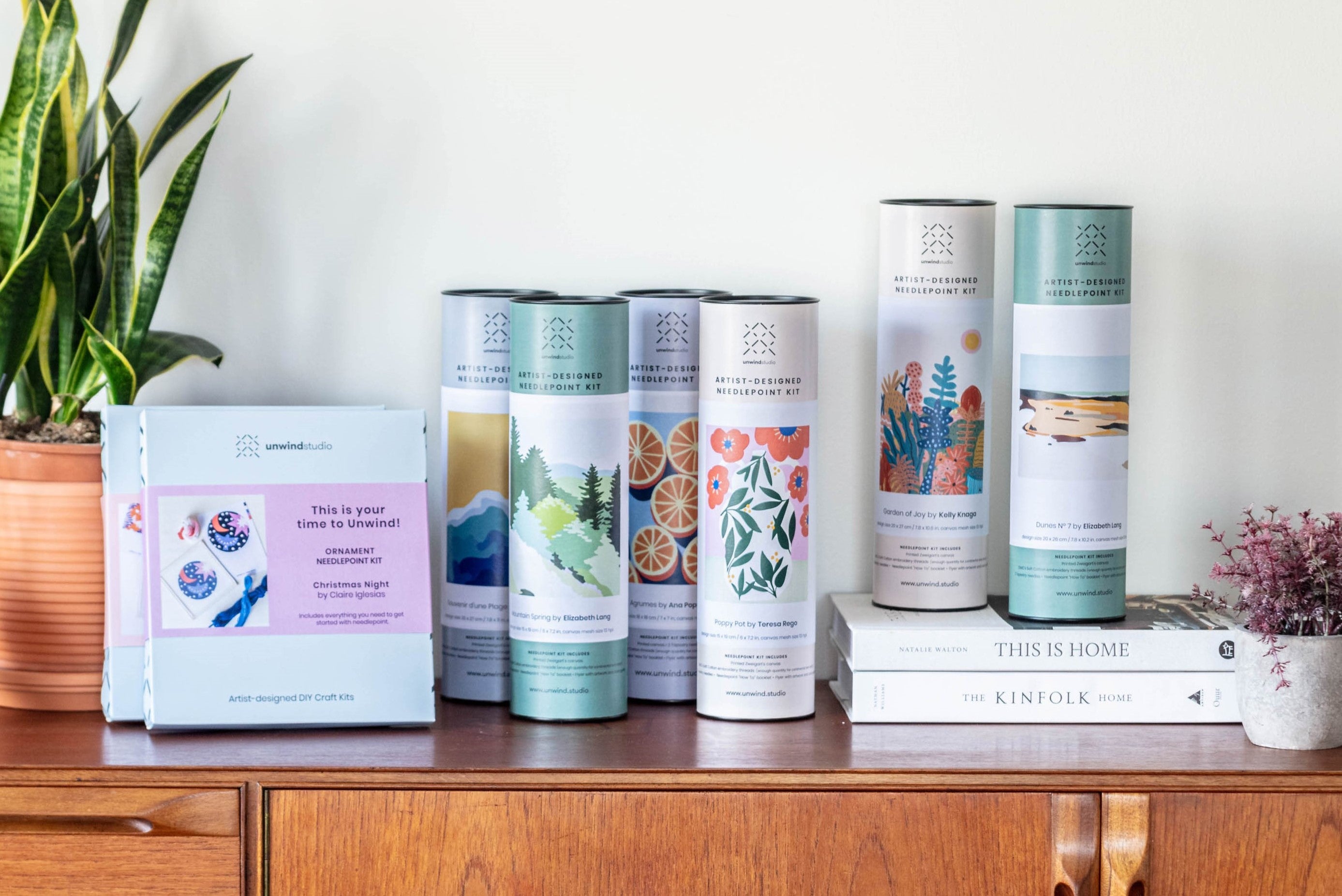Best Needlepoint Stitches for Animals
One of the most exciting and fun parts of stitching cute animals in needlepoint is the opportunity to play with texture. Whether you're stitching a fluffy fox, a colorful peacock, or cute little squirrel, using the right stitches can make your design feel more lifelike and dynamic. And when it comes to adding texture, stitch choice matters the most!
The long stitch is the undeniable star of the show when it comes to capturing the natural flow of animal fur and feathers. Its versatility in length and direction allows you to mimic anything from soft tufts of fur to sleek feather. But it's not the only stitch worth exploring, other textured stitches can help you add depth and movement to your stitched animal as well.
Let’s take a closer look at the best stitches to try:
Long Stitch
Perfect for: Fur, feathers, manes, tails, and anywhere you want movement and flow.
This stitch is simple but powerful. By adjusting the length of your stitches and the direction you lay them in, you can replicate a squirrel's tail, the layered feathers of a bird’s wing, or even the beautiful tail of a peacock. It’s a go-to when you want your piece to feel loose, organic, and richly textured. For extra interest, try layering long stitches or combining short and long lengths to build dimension.

(Squirrel & Acorns | Owl & Berries | Peacock Bookmark)
Needlepoint Long Stitch Video Tutorial
Learn how to stitch the Long Stitch & create the best textures! Watch our step-by-step tutorial on YouTube or find the full article here.
Encroaching Gobelin
Perfect for: Realistic fur, especially when it’s thick or layered (think wolves, bears, cats).
This is a go-to stitch for realistic fur because it allows for a blended, layered look. Each row slightly overlaps the previous one, mimicking how fur naturally lays on an animal's body. By varying the shades of thread and slightly adjusting stitch lengths, you can create the illusion of depth and softness which is ideal for animals that need a bit more realism or shading.

(Conrad, the Cow Needlepoint Kit)
Needlepoint Encroaching Gobelin Stitch Video Tutorial
Learn how to stitch the Encroaching Gobelin Stitch! Watch our step-by-step tutorial on YouTube.
Tressed Stitch
Perfect for: Feathered creatures or decorative elements like tails, plumes, or manes.
This less common but beautiful stitch creates a braided or plaited texture that can mimic the layered nature of feathers or a stylized mane. It’s especially effective for birds, peacocks, or fantastical animals where you want texture and ornamentation to stand out. It adds dimension and visual interest, especially when stitched in a contrasting thread.

Needlepoint Tressed Stitch Video Tutorial
Learn how to stitch the Tressed Stitch! Watch our step-by-step tutorial on YouTube.
Cashmere Stitch
Perfect for: Smooth short-haired animals, or areas like ears and noses that need a neater texture.
The cashmere stitch has a subtle texture with a tidy, woven look. It’s ideal for smaller areas where you still want a bit of softness without the wild texture of longer stitches. Its diagonal direction also helps guide the eye and can add elegance to an animal’s form.

(Deer & Fall Leaves Needlepoint Ornament)
- Check out the Cashmere tutorial here!
Needlepoint Fur vs. Needlepoint Feathers: Different Approaches
When stitching fur, the goal is often to recreate a sense of softness and movement. Long stitch and encroaching gobelin are especially useful here, as they allow for a more natural, flowing texture. You’ll want to pay attention to the direction of growth and layer colors subtly to create shading and depth.
For feathers, the approach shifts slightly. Feathers are typically more structured and layered, so a combination of long stitch and decorative stitches like tressed stitch can help capture that architectural quality. Using tighter or more geometric stitches can help give the sense of order and pattern that feathers often have, especially on wings or tails.
Final Thoughts
Stitching animals is a chance to really experiment with texture, and that’s what makes it so much fun. Whether you're working on a realistic portrait or a playful interpretation, the right stitches can bring your subject to life in amazing ways. So next time you’re tackling an animal in needlepoint, don’t just think about color, think about how it feels, and choose your stitches accordingly! Overall, the most important thing: have fun!!
Happy stitching!




